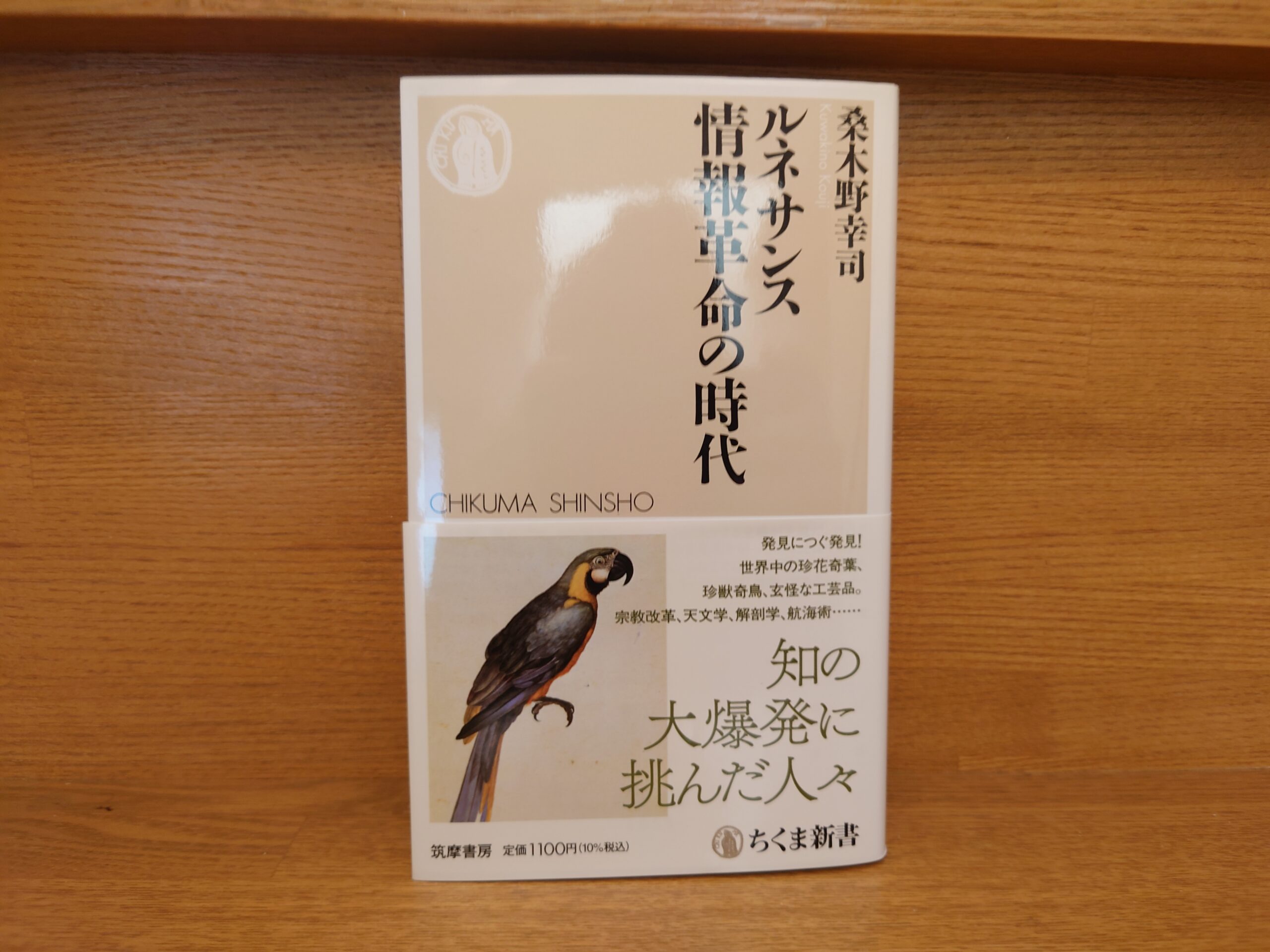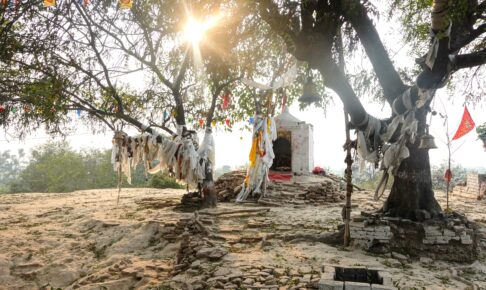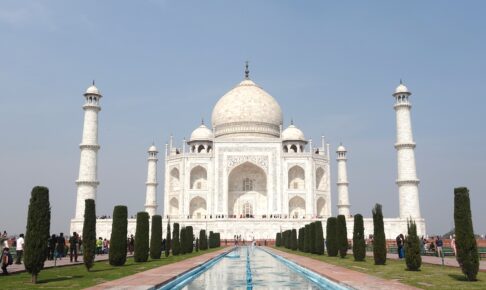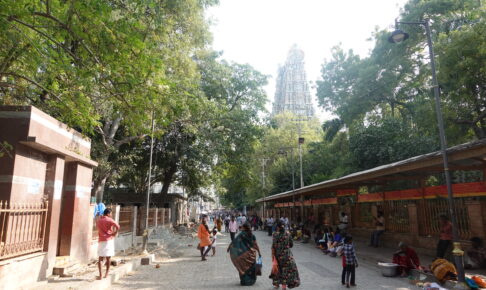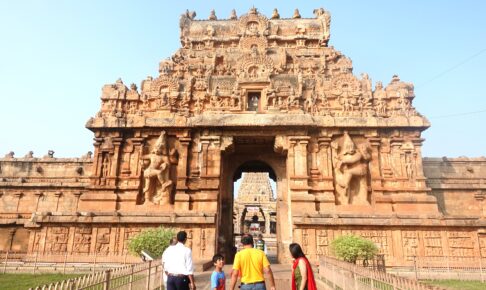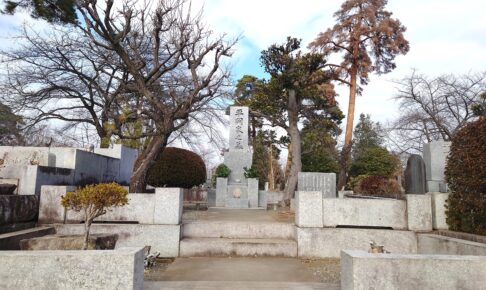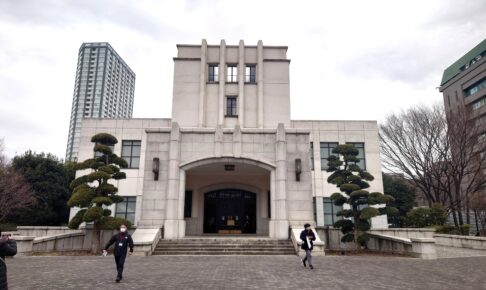Summary and Comments on Koji Kuwakino's "Renaissance: The Age of the Information Revolution" - How did the explosion of knowledge happen? A supremely inspiring and highly recommended work!
I would like to introduce "Renaissance: The Age of Information Revolution" by Koji Kuwakino, published by Chikuma Shobo in 2022.
Let's take a quick look at the book.
Rare flowers, strange leaves, rare beasts, strange birds, and mysterious artifacts from the New Continent and other Asian countries. ...... Discovery after discovery, traditional knowledge wavering. The challenge to confront this information deluge has begun!
A large number of rare flowers, strange leaves, rare animals, strange birds, and mysterious artifacts ...... flowed in from the New Continent and Asian countries. The Renaissance in Western Europe was a time when the traditional frame of knowledge up to the Middle Ages was greatly shaken by a massive flood of information. It was also a period of discovery after discovery, including the discovery of the "ancient" past, the discovery of new avenues of salvation (the Reformation), and the discovery of the universe and the interior of the body (astronomy and anatomy)....... There were those who bravely confronted this unprecedented explosion of knowledge. The challenge to develop original software of knowledge by collecting a vast amount of words and objects, devising classifications, and making full use of print media and artificial memory is about to begin! This is a reading of the Renaissance culture brought about by the Information Revolution.
AmazonProducts Page.
Let me say this first.
This book is extremely interesting! It is surprisingly stimulating.
I read this book in my last post.A Revolution in Printing."was the catalyst.
The art of letterpress printing was developed by Gutenberg around 1450. There is no doubt that this was a great invention that later changed the world.
However, the development of printing technology did not immediately lead to an explosion in people's intelligence, and printing itself struggled commercially for some time after its development.
What was going on among the intellectuals of this period and when did the geniuses of the Renaissance begin to flourish?
I was interested in such things.
It was at this time that I came across this book, "Renaissance: The Age of the Information Revolution.
The best way to learn more about the book's contents and features is to listen to the author's words in the prologue.
So let's read that section right away.
Not light, not dark.
Renaissance" - what a flamboyant and glittering word! As in the scene in Botticelli's masterpiece "Spring," the Western world, which celebrated the hymn to mankind, experienced a rare historical moment when the breeze of renewal blew, and the flowers of culture, full of vitality, bloomed like a cluster of stars.
-The concept of the Renaissance is often associated with shining images, such as "the Renaissance of the 19th century," "the Renaissance of the 20th century," or "the Renaissance of the 20th century. Strictly speaking, the term refers to a "cultural movement" rather than an "era," and is a concept presented in nineteenth-century historiography. Derived from the French word "Renaissance," meaning "rebirth" or "revival," it is said to have been a multifaceted intellectual movement that developed in Western Europe between the 14th and 16th centuries. It was the rich fruit of the transitional period when Western societies emerged from the long medieval period and entered the modern era.
Over the course of more than a century since the mid-19th century, such interpretations have developed in a variety of fields beyond cultural history, and have generally been understood as a positive historical phase that provided a broad foundation for modern society.
As the second half of the 20th century approached, the opposite side of this shining impression came into focus. If one peels back the veil of light, one finds witchcraft and mysticism walking about, while bloody religious struggles and political turmoil were the norm. Even in the field of art, there were many grotesque and mysterious works of art. It was truly a "renaissance of the night" (rinascimento notturno).
Light and darkness. Today, the mainstream position is to pay attention to both sides in a well-balanced manner. However, instead of swinging like a pendulum between these two extremes, can we not try to look at this period and this phase of culture from a completely different point of view? Through this third perspective, as it were, I would like to pursue a novel and unprecedented image of the Renaissance. That is the purpose of this book. The key word is "information.
Chikuma Shobo, Koji Kuwakino, Renaissance: The Age of the Information Revolution, p. 10-11
After citing Columbus' discovery of the Americas in 1492 and Copernicus' "The Theory of Celestial Rotation" in 1543 as examples, the author goes on to say, "The discovery of the Americas by Columbus in 1492 and Copernicus' "Theory of Celestial Rotation" in 1543 are two of the most important discoveries of our time. This is a bit long, but it is a very interesting section, so I will read it carefully.
Expanding horizons
If we put together the events that took place before and after these two symbolic years - 1492 and 1543 - it is easy to see how much the cultural movement known as the Renaissance expanded the "horizons" of people's perceptions.
Let us review the cultural phases of this period. First, there was the intellectual movement of "Studia humanitatis," which began in earnest in the 14th century and sought to revive the literature of ancient Greece and Rome. The basic premise of this movement was the historical sense that a superior culture different from our own existed far in the past, disconnected from the present. In this way, the horizon of time awareness was broadened. The exploration of the Age of Exploration and the opening of new sea routes, as typified by Columbus, expanded Europeans' sense of geography horizontally, and the Copernican geocentric theory of geocentrism did the same on a vertical axis on the scale of the cosmos. The Reformation movement of Martin Luther (1483-1546) and others, which began in earnest after 1517, brought the idea that there is more than one way to salvation, in other words, the expansion of the horizon of the mind.
Media Revolution and the Age of Information Explosion
A major factor in all of these phenomena was letterpress printing, which was put to practical use by Johannes Gutenberg in the mid-fifteenth century. The advent of this technology, which made it possible to reproduce not only text but also complex illustrations at high speed and in large quantities, represented one of the greatest media revolutions in the history of human culture, comparable to the advent of the modern Internet age.
This art of printing went hand in hand with the expansion of the Renaissance man's cognitive "horizons". Not only in the fields of classical studies and natural science, but also in religious and political struggles, this new medium was used in every direction to transmit and disseminate vast amounts of knowledge and data.
It is not only text and images that have increased. The number of physical "objects" has also increased dramatically. In addition to the constant influx of rare and unusual objects, flowers, and leaves from outside the region, ancient sculptures, ancient coins, and medals dug up from the ground have also attracted a great deal of interest. Furthermore, the development of the city's economy has flooded the European market with a wide variety of handicrafts, arts, and crafts.
As our knowledge of the natural world grows, the world that we had previously grasped in general terms, such as bears, roses, gems, and so on, is now covered with a precise weave of classification, and individual species are cut up into smaller and smaller pieces. There is a famous line from Juliet, "Even if we don't call them roses, they must smell the same. ......" If Romeo were a natural history buff, he would say, "No, even within the same rose family, a Gallica rose and a Damask rose have completely different fragrances, and an Alba rose and a Damask rose have completely different fragrances. Alba roses and dog roses also have their own unique fragrances. ......" If Romeo were a natural history buff, his girlfriend would have scolded him when he started to proudly display his knowledge.
In short, "information" flooded and exploded.
Chikuma Shobo, Koji Kuwakino, Renaissance: The Age of the Information Revolution, p. 14-16
It was a historical sense that a superior culture different from our own existed beyond the past, disconnected from the present. Thus the horizons of our perception of time were broadened."
What the Reformation movement of Martin Luther (1483-1546) and others brought was the idea that there was more than one way to be saved, an expansion of the horizon of the heart."
You make a very interesting point about the "horizon of time perception" and the "horizon of the mind" being extended.
And the story of Romeo and Juliet at the end of the quote makes me giggle, but it shows very clearly what the information explosion was about.
The author then concludes his prologue as follows
The Renaissance from the Perspective of Information Editing
As mentioned at the beginning of this article, many books have been written about the Renaissance from the standpoint of both light and darkness. However, there are still not many overview books that look at this period from the perspective of "information. In this book, I would like to discuss the Renaissance as a cultural movement/era from a slightly, or perhaps quite different angle, by considering the period from approximately the 15th to the early 17th century in Western Europe as an era in which the media revolution gradually progressed.
What kind of intellectual struggles could be seen during this period, when the worldview of the past was crumbling with a loud bang and people were exposed to vast amounts of information and new knowledge on a daily basis? The episodes of originality, ingenuity, and failure of our predecessors who lived in the age of information explosion will be of great help to us today.
For this reason, this book loosely uses the term "Renaissance" to refer to both a cultural movement and an era, and does not delve too deeply into the question of a strict definition of this cultural-historical concept, nor is it too concerned with presenting a general historical vision. Instead, I will discuss a la carte some of the areas in which the ingenuity of information editing stands out. In the following chapters, I will first take up the topic of maps to give an overview of the theme as a whole, and then discuss the classification of knowledge, the impact of the art of printing, the problem of language, the art of memory, and natural history, in that order. The chapters that follow will be divided into the following three categories: classification of knowledge, impact of the art of printing, language, memory, and natural history.
Let us now set out to paddle into the ocean of Renaissance knowledge.
Chikuma Shobo, Koji Kuwakino, "Renaissance: The Age of the Information Revolution," p. 16-17
In this book, I will discuss the Renaissance as a cultural movement/era from a slightly, or perhaps quite, different angle, by looking at the period from roughly the 15th to the early 17th century in Western Europe as a time of gradual development of the media revolution."
This book looks at the Renaissance, a period that is both understandable and difficult to understand, through the lens of the "media revolution.
I love books. As such a book lover, it was the most exciting and thrilling experience for me to learn how books have changed the world.
This is interesting.
I highly recommend this great book to anyone who is interested in the Renaissance and loves books! It is extremely interesting!
This is a work that will spark your intellectual curiosity! Why not pick up a copy?
The above is a summary and impression of Koji Kuwakino's "Renaissance: The Age of the Information Revolution" - How did the explosion of knowledge happen? A great book that sparks intellectual curiosity! This is a great book that will spark your intellectual curiosity!
Next Article.
Click here to read the previous article.
Related Articles












